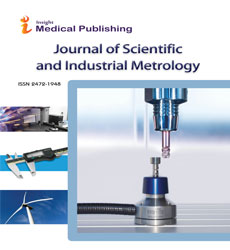Abstract
Influence of the Spectrophotometer on Readings and Results Obtained from Commercial Equipment when using ELISA Post Interferon Gamma Release Assay for in vitro Diagnosis of Human Tuberculosis
Early and reliable laboratory diagnosis is very important to guide treatment of and control strategies for a disease. Some technical problems can occur due to laboratory facilities and methodological procedures. Many in vitro diagnoses are based on colorimetric methods such as the quantitative Enzyme- Linked Immuno Sorbent Assay (ELISA), whereby optical density (OD) is compared with a standard curve. The readings of these assays are based on absorption by a spectrophotometric device of light from a narrow or broad spectrum of waves. Objective: The aim of this work was to read the ELISA plate using different spectrophotometry equipment. Methods: Human plasma samples from healthy volunteers (n=50) and volunteers with tuberculosis (n=24) were prepared previously by whole blood incubation in the commercial Interferon Gamma Release Assay (IGRA) for in vitro diagnosis of tuberculosis and then the Interferon ELISA was performed using commercial equipment from the same manufacturer. The ELISA micro plates were read in three spectrophotometers with different filters/wavelengths: 450, 630 and 450 nm. The optical densities were established and analyzed using the manufacturer’s software program. The results of the readings performed at the recommended wavelength were compared with the other two filters/wavelengths. Results: Among the results obtained, 10 samples showed differences in the results of diagnosis. These discrepancies in metrology were associated with differences in the filters/wavelengths and were consequently identified as false results.
Author(s):
Rogério Reis Conceição
Abstract | Full-Text | PDF
Share this

Abstracted/Indexed in
- Google Scholar
- Directory of Research Journal Indexing (DRJI)
- WorldCat
- Secret Search Engine Labs
Open Access Journals
- Aquaculture & Veterinary Science
- Chemistry & Chemical Sciences
- Clinical Sciences
- Engineering
- General Science
- Genetics & Molecular Biology
- Health Care & Nursing
- Immunology & Microbiology
- Materials Science
- Mathematics & Physics
- Medical Sciences
- Neurology & Psychiatry
- Oncology & Cancer Science
- Pharmaceutical Sciences
